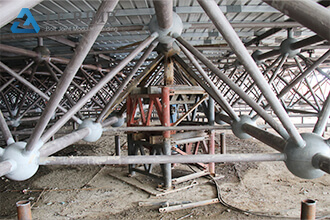+86 177 5193 6871
222, Block B, Diamond International, Guozhuang Road, Xuzhou, Jiangsu, China
The design principle of welding nodes of steel structure should mainly consider to facilitate the welder’s operation to get dense high-quality weld, minimize the deformation of components, reduce the value of welding shrinkage stress and its uneven distribution, especially to avoid local stress concentration.

The type of modern building steel structure is becoming more and more complex, and various welding positions will be encountered during construction. Now whether it is factory production or labor
Now, whether it is factory production or industrial installation construction, the position of upward welding has been widely used, and the technical level of welders has been improved, so this specification does not list upward welding as the welding operation position that should be avoided.
For the symmetrical section of the member, the weld is arranged symmetrically in the section of the member and the axis of the provision is to reduce the overall deformation of the member of the fundamental measures.
Measure. However, for the overlap angle weld between the end of angle steel member and node plate in joist, it is not necessary to lay out the welds symmetrically because it has little effect on the deformation of the member and cannot improve its bearing capacity.
In order to meet the requirements of architectural art, the steel structure body shape is becoming more and more diversified, which often makes the nodes complex, dense welds and even the plate thickness.
In three-dimensional intersection, and plate thickness, constraints Ambassador weld can not be free to contract, resulting in two-way, three-way welding stresses, this kind of welding residual stress can generally reach the yield strength value of steel. This is one of the most important factors affecting the generation of delayed cracking and laminated tearing of the plate. Generally in the selection of materials to take control of carbon equivalent, control of the weld diffusion hydrogen content, technology to take pre 15 heat or even post-heat dehydrogenation treatment, but even if no cracks, welding node area in the welding contraction stress, due to the lattice distortion generated by the microscopic strain, will make the material plasticity decline, the corresponding strength and hardness increase, so that the structure in the work of the possibility of working under the action of brittle fracture increases.
Therefore, it is necessary to avoid dense and intersecting weld seams as much as possible and to avoid high stress areas when designing nodes.
